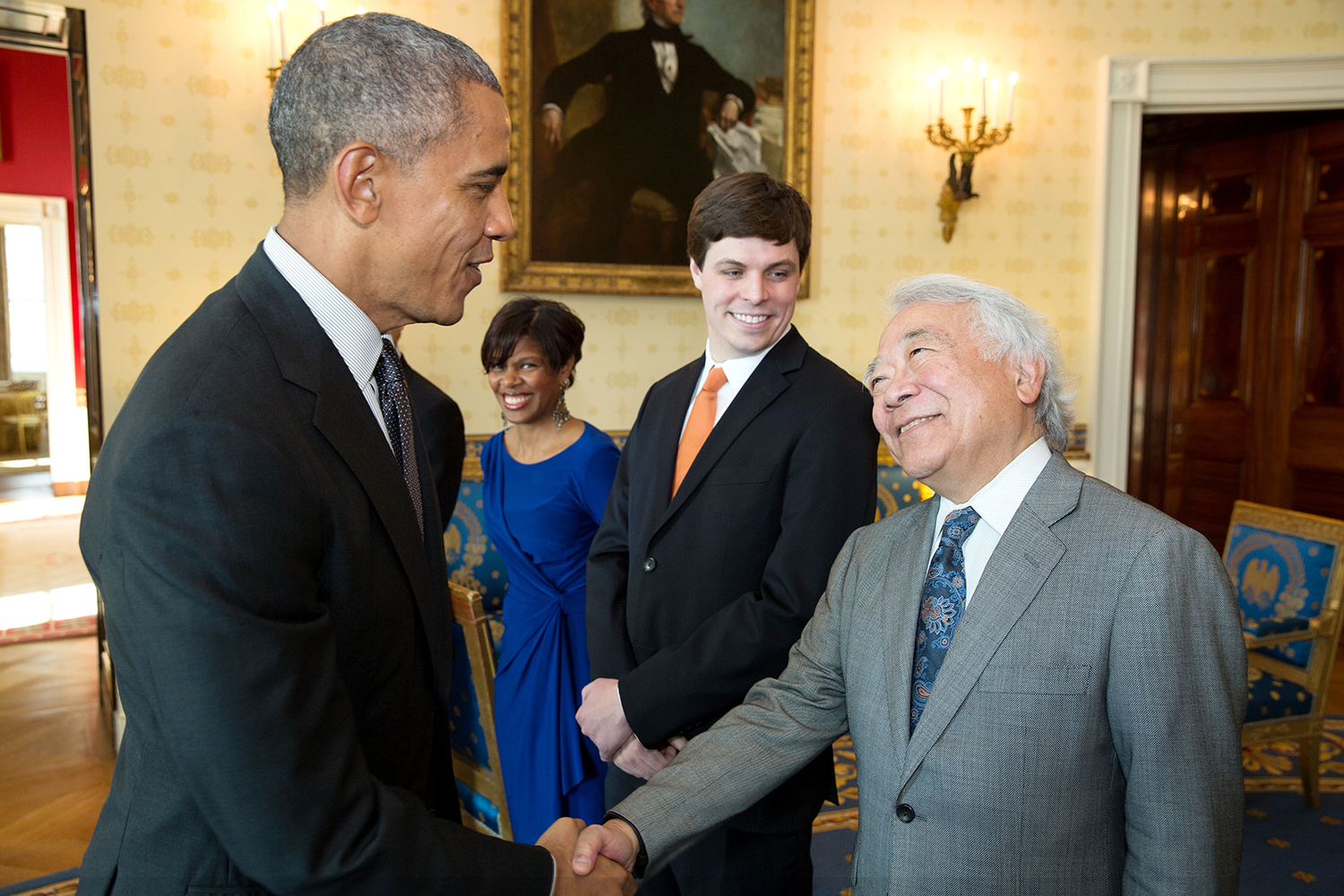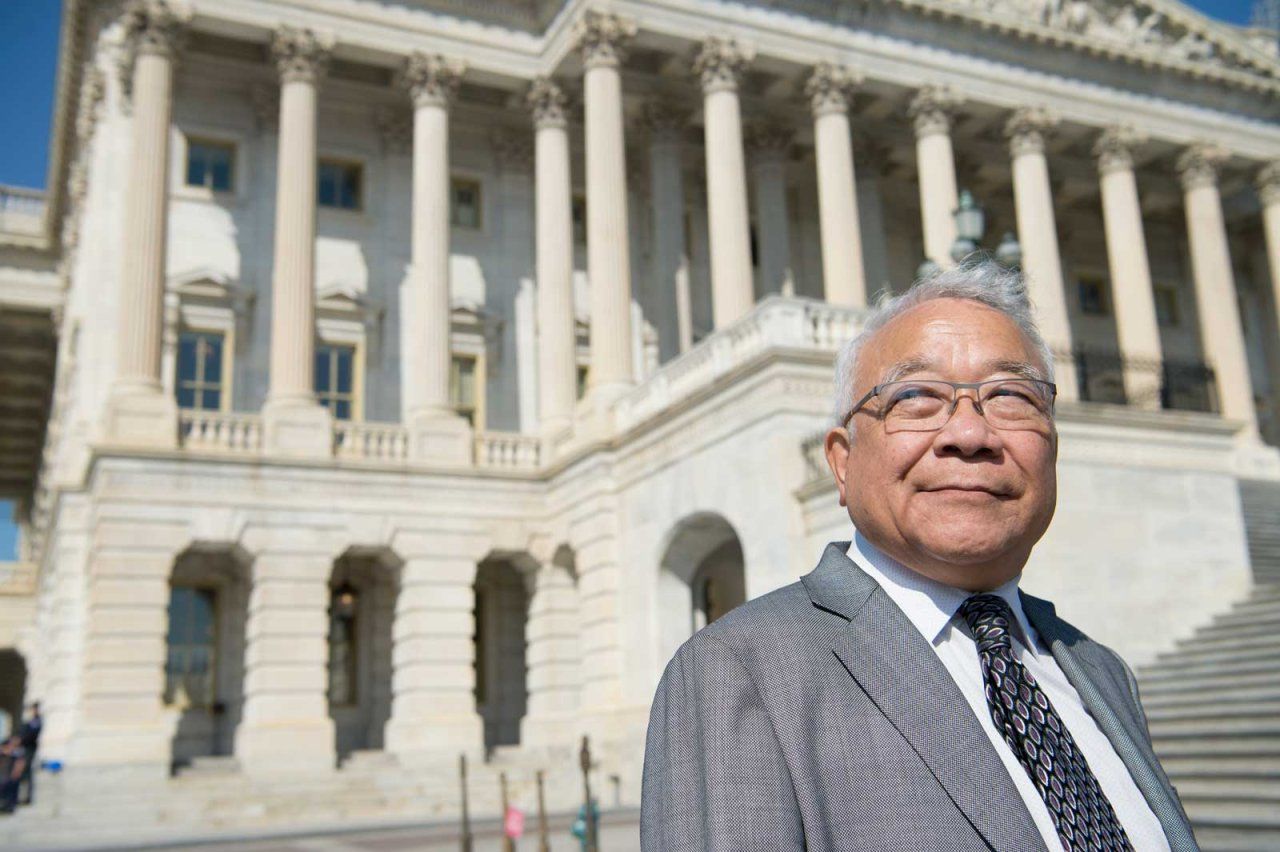After a storied scientific career that began with the discovery of how hormones control genes, Keith Yamamoto, PhD, has retired.
Yamamoto, who most recently served as Vice Chancellor for Science Policy and Strategy at UCSF, is best known for his role in developing the concept of precision medicine, which he laid out in a report along with colleagues at the National Academies of Sciences, Engineering, and Medicine.
Precision medicine was just one of his many contributions to science policy. Yamamoto played an important role in developing a new National Institutes of Health (NIH) grant mechanism to bridge the transition from postdoc to assistant professor, and his advocacy helped to establish a new biomedical funding agency, the Advanced Research Projects Agency for Health, or ARPA-H.
"I have had the privilege of following Keith's extraordinary career for more than 40 years, as he grew from a brilliant basic scientist into a national leader on science policy," said Chancellor Sam Hawgood , MBBS. "Without exaggeration, his positive influence can be felt by every biomedical scientist working today."
A career grounded in curiosity
Yamamoto's research helped usher in the modern understanding of gene regulation, and his laboratory worked from 1976 to 2021 to discover new details about how cells choose which genes are expressed.
As a graduate student at Princeton, working under the mentorship of Bruce Alberts, PhD, Yamamoto discovered that the hormone estradiol stimulated the estradiol receptor to bind to DNA. He proposed that it might bind to specific DNA sequences to affect the activity of nearby genes.
For all these years, I've had the support of my colleagues - my friends - to go out on a limb and try to make an impact. I'm blessed to do this in the name of UCSF."
At UCSF, he and his colleagues found such binding sites for another hormone. In a seminal 1983 study, they showed that bits of genetic code, dubbed "glucocorticoid response elements," made nearby genes turn on in the presence of glucocorticoid hormones. These response elements could be used to make any gene responsive to glucocorticoids when placed artificially in new locations on chromosomes.
As Yamamoto's peers learned of his work, they found this kind of genetic machinery at play in every biological context. The genome - the genetic material of a cell - mixed-and-matched modular parts, like DNA response elements, to fit any need. When the machine faltered, the health of tissues, organs, and organisms could slide.
Other scientists in far-off fields applied these insights, and Yamamoto was elected to the National Academy of Sciences (NAS) and the American Academy of Arts and Sciences in 1989, to the American Association for the Advancement of Science (AAAS) in 2002, and to the National Academy of Medicine in 2003.
Collaborating toward a new taxonomy of disease
Science was identifying genetic factors linked to many diseases, but these insights were made in isolation and were slow to be applied to diagnosis, treatment or cure.
Yamamoto thought a new level of collaboration across disciplines was needed. So, in 2009, as chair of NAS's Board on Life Sciences, he invited leaders in genomics, computer science, epidemiology, surgery and pharmacy to craft a new, unifying approach to biomedical research, population health, and medicine.
The NAS committee came up with "precision medicine," which would use computing tools to synthesize insights from across fields, ranging from basic science to clinical, environmental and population health studies, to design and deliver individualized care for patients. In an influential 2011 report, they described how the new approach would improve outcomes and reduce health care costs.
"Precision medicine brings information from different fields together, revealing connections between otherwise disconnected layers of knowledge, and advancing us toward patient-specific health solutions," Yamamoto said.
Committee co-chair Susan Desmond-Hellmann, MD, who was then UCSF's chancellor, called for amassing the resources needed to implement precision medicine on a broad scale, like secure repositories of de-identified patient data for researchers, whose findings could in turn improve patient health.
By 2015, in response to Yamamoto's advocacy, President Barack Obama and California Governor Jerry Brown each announced government initiatives to fund precision medicine. A year later, Yamamoto and Chancellor Hawgood welcomed Vice President Joe Biden to UCSF to help launch the Cancer Moonshot Initiative.
Cancer, today, is eminently more treatable with extensive genetic and other data for each patient and each tumor in hand. Precision therapies for many other diseases are in the works.

Science policy for scientists and for the world
Throughout his career, Yamamoto sought to improve science policy and practice to unleash scientists to do creative, impactful work at every training and career stage, and ensure that all of society could benefit from their research. He chaired or served on myriad committees and organization boards, led initiatives and coalitions, wrote policy briefs and opinions, testified in Congress, and engaged with diverse stakeholders in working to create meaningful change.
He credits this ethic to those pivotal first few years working with Bruce Alberts.
"Bruce conveyed through his actions that we're privileged, as scientists, to work in a profession where the rules, the ways that we operate and interact, the standards we set and the values we hold, depend largely on us," Yamamoto said. "We get to design the playing field, play on it, tend it, update it. It's a privilege we can't afford to squander."
Yamamoto worked within the NIH and as a congressional advocate to create new federal grants aimed at early career scientists, ensuring continuity across generations of researchers. He streamlined how grants were vetted, in one case halving the maximum length of applications for R01 grants - the backbone funding source for most academic laboratories - and clarifying the criteria by which they were judged.
His advocacy changed how research was done and communicated. Whether it was establishing standards and guidelines for responsible conduct of research, or ensuring that federally funded research findings are openly accessible to all, countless scientists benefited from his vision.
As a member of the NIH Biomedical Workforce Working Group, he helped create the NIH BEST Program, which spurred UCSF and 16 other institutions to adopt innovative career exploration courses for graduate students and build a paradigm for other institutions to follow.
As president of AAAS, Yamamoto challenged the community to move "Toward Science Without Walls", to penetrate barriers that separate disciplines, stakeholder sectors, and nations, and make practicing and benefiting from science inequitable. As chair of the Coalition for Life Sciences, he headed preparation and publication of three editions of a working paper, the most recent "Optimizing NIH 2025," which suggest changes in NIH policies and practices to better serve scientists, trainees, and the public.
"UCSF, of course, is a fantastic place to do science, and that's been a joy throughout my career. But I couldn't have been involved in all of this policy stuff if it weren't for the unique culture established here," Yamamoto said. "For all these years, UCSF has offered freedom, and my colleagues have provided support, for me to step out on limbs to try to make an impact. I'm blessed to do this work in the name of UCSF.







